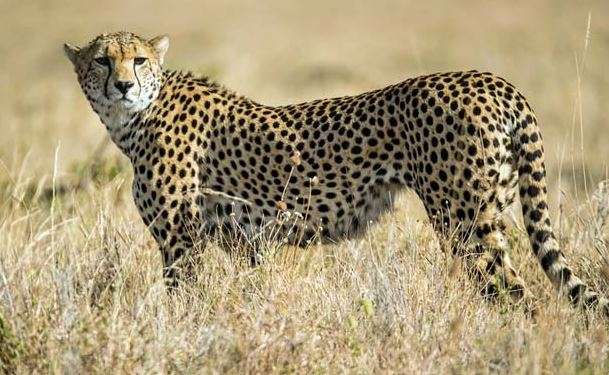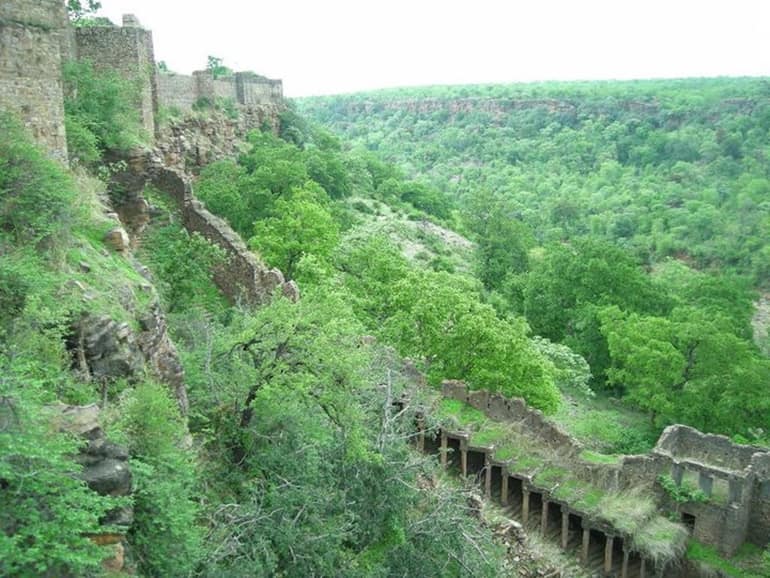India’s last cheetah died in Chhattisgarh in 1947 and after that it was declared extinct in the country in 1952. But now there’s a positive turn as cheetahs would be sighted soon in the country once again. There is a plan to introduce African cheetahs in the Baran district of Rajasthan. Naturally rich and famous for its Shergarh Sanctuary and Shahbad’s dense forests, Baran district is all set to become the home for cheetahs if everything goes as planned.
A wildlife team recently visited the district to take stock of the situation. The team visited Shergarh Sanctuary and also the nearby Kuno Palpur sanctuary in Madhya Pradesh. After survey, it was decided to release the cheetahs at Kuno Palpur first and work was started. It is expected that once they are released in Kuno Palpur, the cheetahs will also visit the nearby Shergarh Sanctuary.

A large number of tourists visit Shergarh Sanctuary. The sanctuary, which is home to three leopards, is also considered a suitable place for cheetahs. The conditions here, such as grasslands, rivers etc., are favorable for the cheetah.
Indian Masterminds interacted with District Magistrate of Baran district Rajendra Vijay and DFO V Chetan Kumar to know about the existing big cats in the area and the recent development regarding the plan to introduce cheetahs.

SHERGARH SANCTUARY
The sanctuary now has three leopards. One male and two females. Other than leopards, the sanctuary is also home to crocodile, jarak, fox, black deer, chinkara etc. A boundary wall was recently constructed for the protection of the wildlife.
Talking to Indian Masterminds, District Magistrate Rajendra Vijay said, “Shergarh area is very suitable for cheetah, and we have developed an eco-sensitive area for it. We believe that this is the best suitable place for a cheetah. That’s why wildlife people are working on it, and you may see African cheetahs here in the future. Apart from this, we have a lot of tourism potential here. Tribal tourism is very prominent as the Sahariya tribe lives here. Agro and eco tourismare also major thrust areas.”

IAS Rajendra Vijay further said that a committee has been constituted for implementation and management of district level tourism development to promote tourism in the district. At the same time, a district level committee has been constituted for guide training course and guide selection.
DFO V Chetan Kumar told Indian Masterminds: “A wildlife team had come to Shergarh as this area is considered very good for cheetahs. And this is the area adjacent to Kuno Palpur of MP. Presently the team has already started work in Kuno Palpur and the in future, African Cheetahs can be seen in Shergarh also. This initiative is still in the initial stage. Hopefully some good results will come out soon.”
ECO SENSITIVE ZONE
Talking to the media, ACF Anurag Bhatnagar said that the boundary of an eco-sensitive zone is being determined in the Shergarh Sanctuary. It will cover an area of about 332 sq km. It is expected that this will create avenues for employment by boosting tourism.

Also, a 3-km jungle safari will be conducted from Nahariya Mala, the princely hunting ground, along with boating in the Parvan river. Tourists will be able to enjoy both jungle safaris and boating. According to ACF Anurag Bhatnagar, the hunting ground of the Nahariya Mala princely state in Shergarh can be reached only by boat from Parwan. At the end of the boat ride, tourists will reach Mala. From here, trekking will start in the forest for 2 to 3 km.

PLAN TO INTRODUCE CHEETAH
Recently,the Environment ministry unveiled its plan to introduce 50 cheetahs in Indian forests over the next five years. Cheetahs will be introduced in Indian forests 70 years after they went extinct. The Environment Minister showcased a plan for the introduction of Cheetah in India at the 19th meeting of the National Tiger Conservation Authority.
As per the action plan, a cohort of around 10-12 young cheetahs that are ideal for reintroduction shall be imported from Namibia or South Africa. Minister Bhupendra Singh said that the PM is very much interested in the protection and conservation of seven major big cats, including cheetah. The Supreme Court has also given its stamp of approval on the plan to introduce African cheetahs to suitable habitats in India on an experimental basis.

































